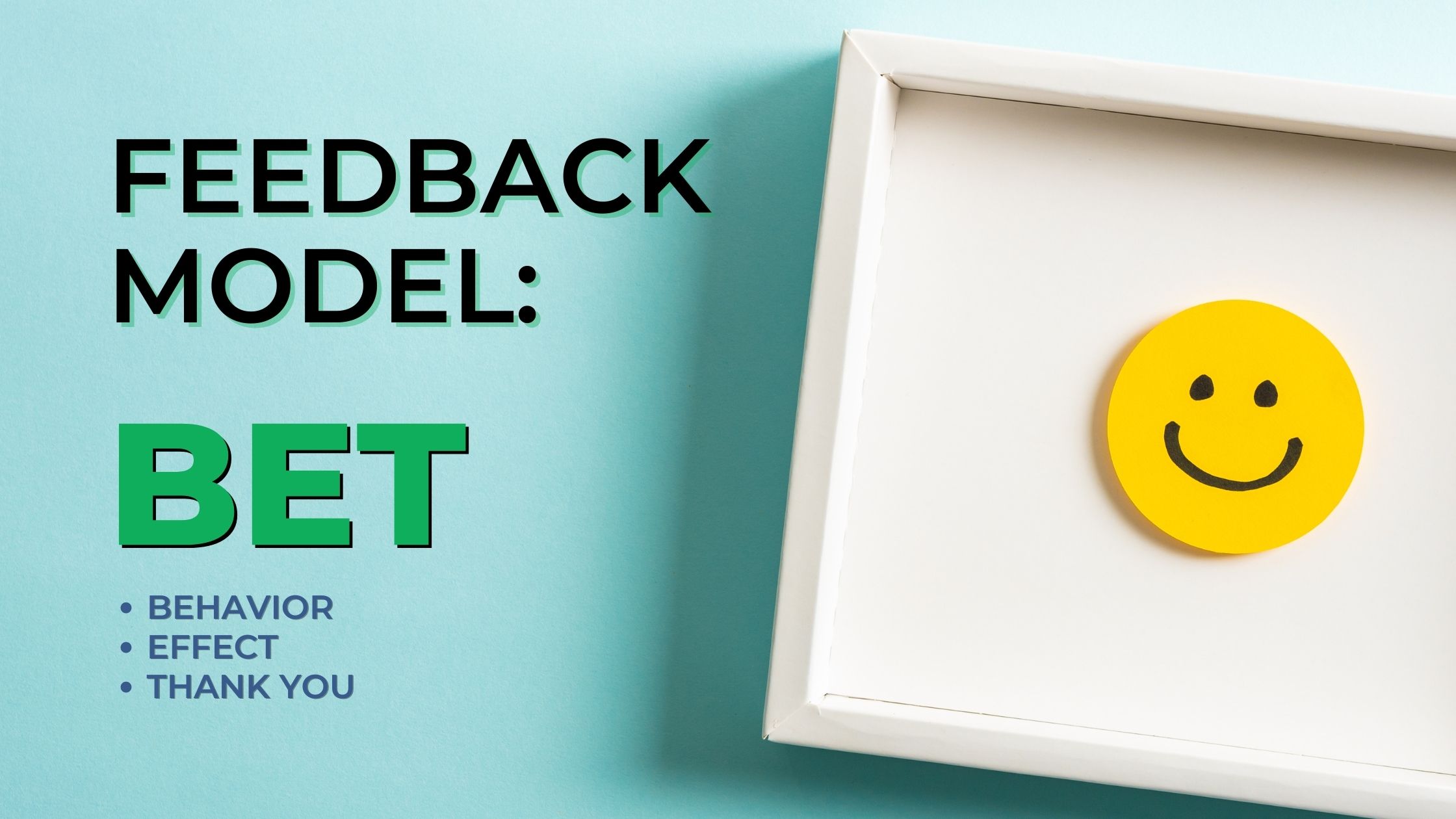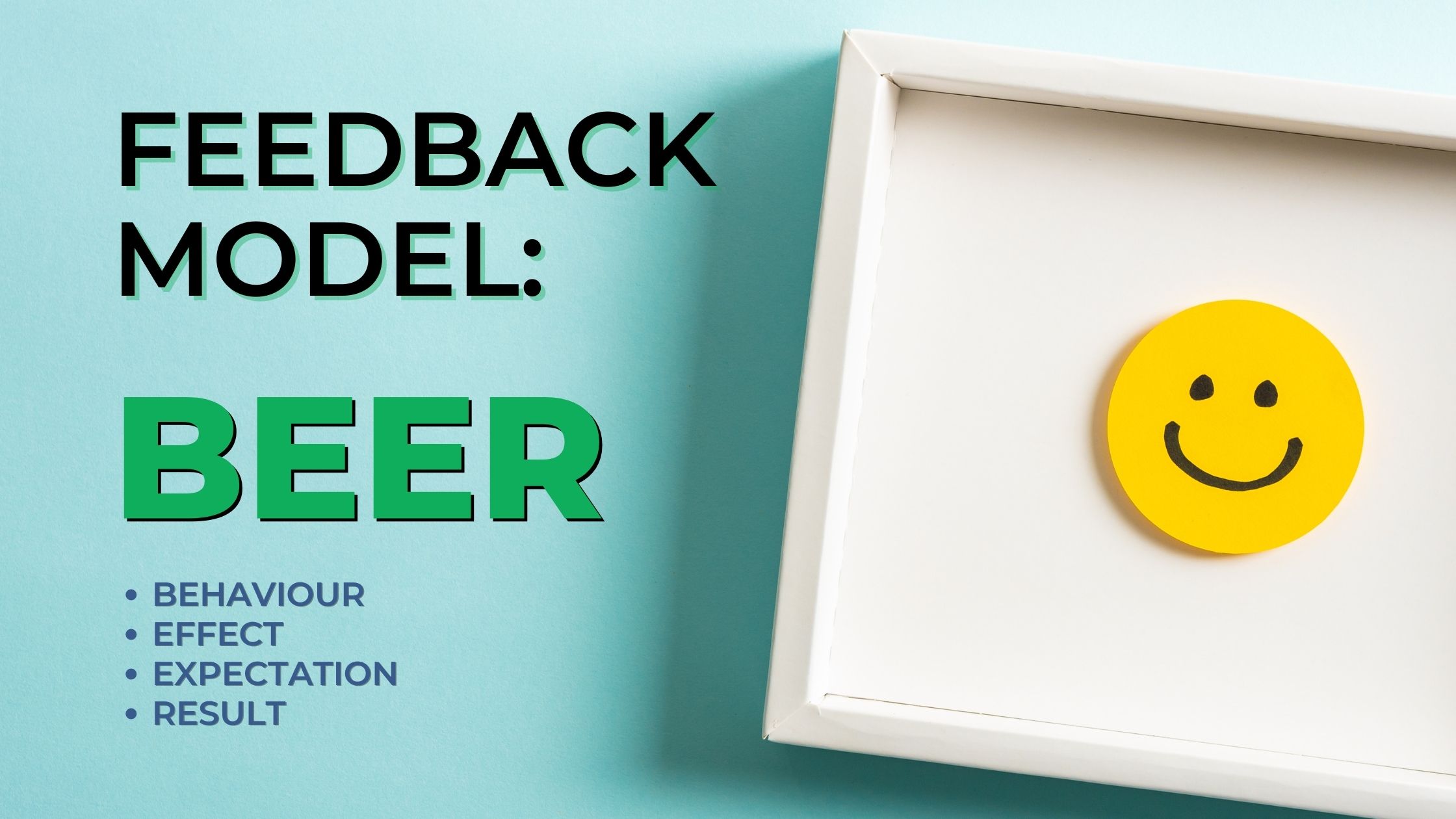Can I give you some feedback on that?
A phrase most people don’t like to say, and almost nobody wants to hear. Shrouded in negativity, ‘feedback’ evokes dread and instills employees with the feeling of having performed poorly.
If you’ve read my blog post, Your Manager Toolkit: 3 feedback models to turbocharge employee engagement, you know that giving feedback needs to focus on the observed behavior, and not the negative results, which can lead to that dread I mention above.
In my 20-plus years of coaching, I have come across several methods of delivering feedback (for example, the SBI feedback model), but few hold a candle to the BET and BEER feedback models. The best part is they require only minor changes to your managerial style and will have a noticeable impact on employee behavior and overall workplace morale.
So, let’s break down each star model and uncover what makes BET and BEER feedback game-changers.
What is the BET feedback model?

The BET feedback method comprises three simple steps: Behavior, Effect, and Thank you.
By reinforcing the positive actions of employees or contractors, you can immediately change the paradigm of what providing feedback represents at your organization. The expectation that your staff only hear from you when something has gone wrong is eradicated when you use BET feedback regularly. In addition, employee engagement and productivity will increase, and staff will feel valued—a crucial factor in retaining employees in the modern workplace.
What is an example of BET feedback?
Let’s say an employee used an innovative method to close a deal with a client.
Your first step is to recognize the behavior you observed as being instrumental to the deal’s success. Follow this up with the effect this positive result has had on the company and its peers. For example, other team members may have started replicating the method in their dealings with stakeholders. Finally, give heartfelt thanks.
And that is it!
It seems simple, but you would be surprised how many positive actions go unnoticed in workplaces everywhere. The BET feedback method is a neat way to avoid workplace malaise and applaud your team’s performance.
What is the BEER feedback model?

The BEER feedback model stands for Behaviour, Effect, Expectation, and Result. Commonly misinterpreted as negative feedback, BEER is more about redirecting specific employee behavior toward a more productive outcome, and reducing conflict.
Of course, employees will find this type of message more challenging to hear. However, when used correctly, staff will realize that you intend to advocate for beneficial outcomes and personal improvements. It is not negative feedback that attacks their character. Ideally, their response will be to use the feedback in the BEER model to achieve better future outcomes.
What is an example of BEER feedback?
Suppose a team member is disinterested in meetings or excessively interrupting other staff. In that case, you could use the BEER feedback model to redirect these behaviors positively.
Step one is to let them know you have witnessed the behavior. Next, inform them of the effect their inattention is having on the team. Follow this up with a reminder of your expectations for all employees in staff meetings. Lastly, let them know the result of what they might gain from giving their full attention. Try to elicit a two-way discussion and an overall commitment from the employee, so they know what you are trying to convey.
Summing It Up
So there you have it! Obviously, BEER is more nuanced than BET. However, both have their merits in creating a harmonious and productive workplace.
BET reinforces excellent outcomes, and lets employees feel heard, while BEER proposes actionable steps and alternative actions to redirect more unsavory behavior. Please try them both and note how your employees are receiving feedback! You may also want to consider the SBI feedback method, which I outline here.
Of course, if you are interested in discussing these or any other skills that an influential and respected leader needs, please reach out to me. I would love to discuss executive coaching and how you can incorporate effective feedback methods into your leadership.
Did you enjoy this article? You might also enjoy:
The SBI Model: 3 Easy Steps to Improve Employee Feedback
6 Essential Skills for Conflict Management and Conflict Resolution
How to Become an Influential and Respected Leader: 8 Essential Skills


